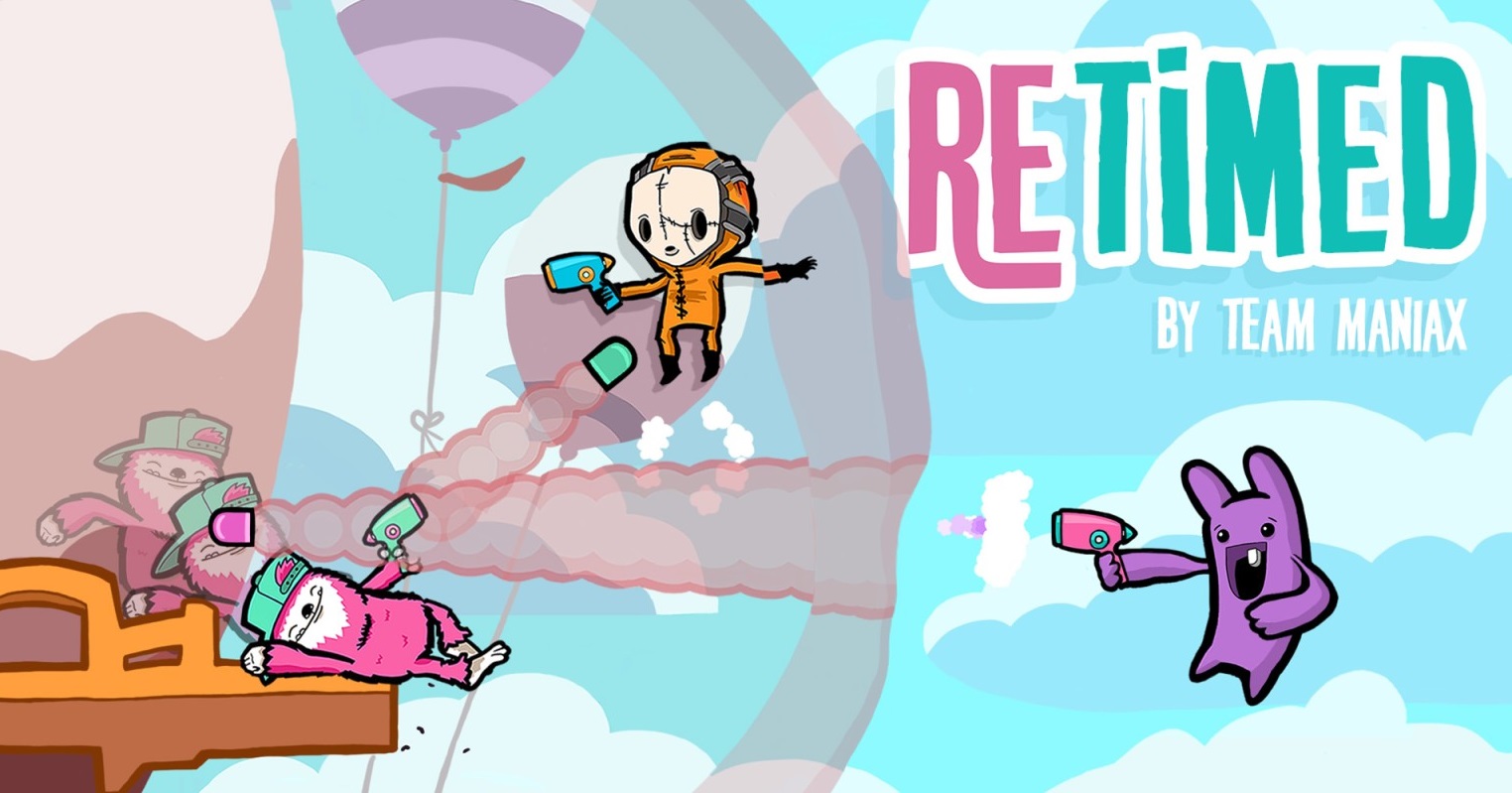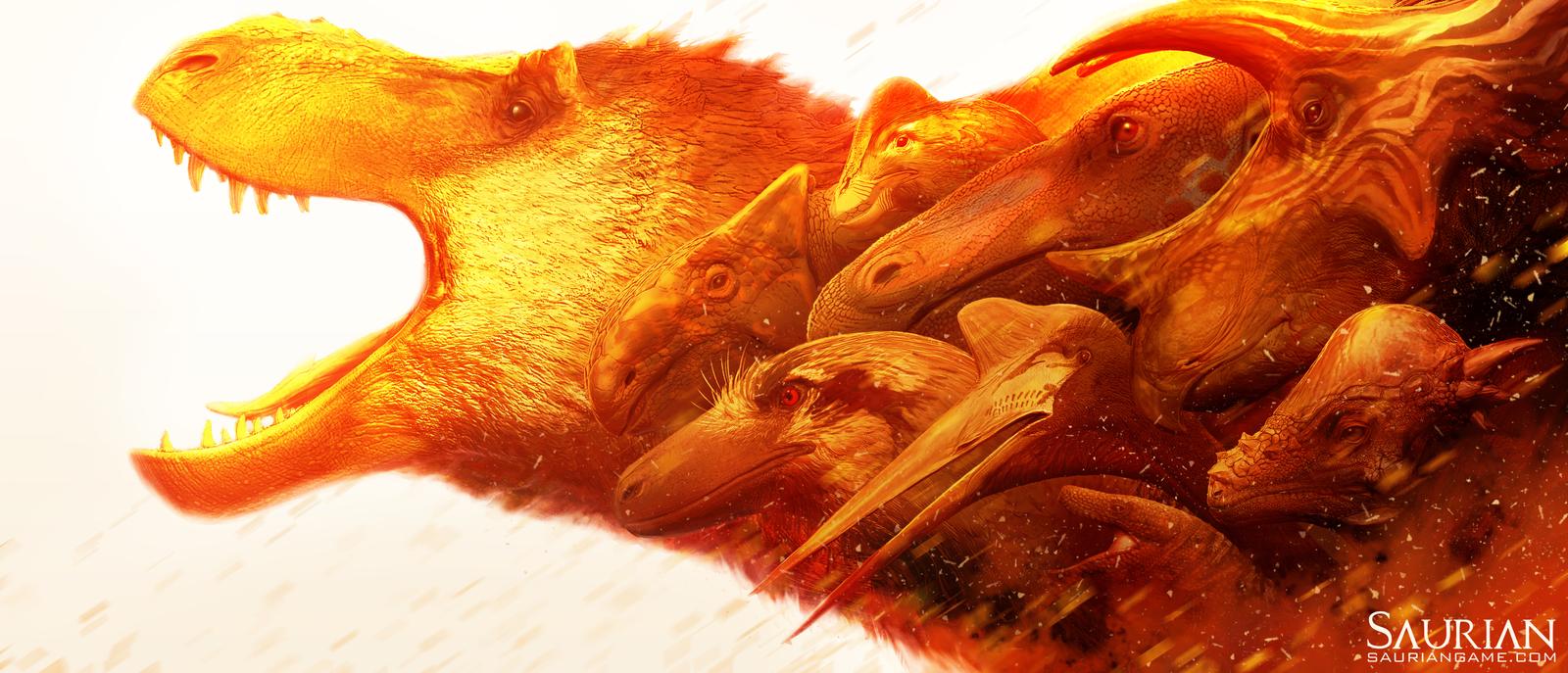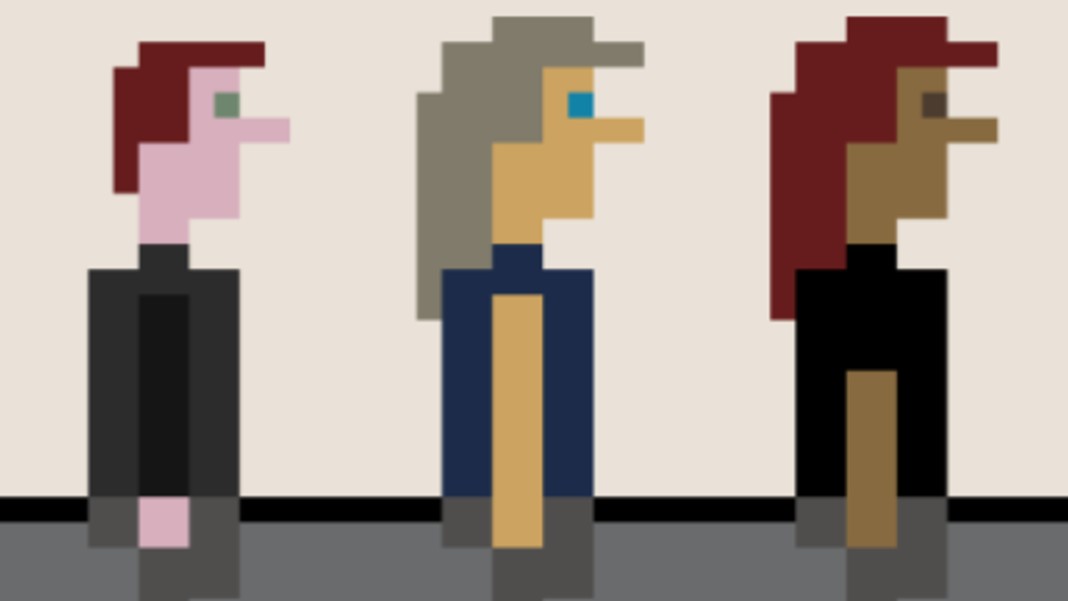As the bullet blasts toward you, the laws of physics decide to lend a hand, slowing down time and speed, giving you a chance to dodge—and you take it, bending backward until your body is practically parallel to the ground, and you watch the projectiles fly above, barely missing your face.
This isn’t watching Neo from the critically acclaimed The Matrix film, this is playing as a Yeti in Retimed on the Nintendo Switch.
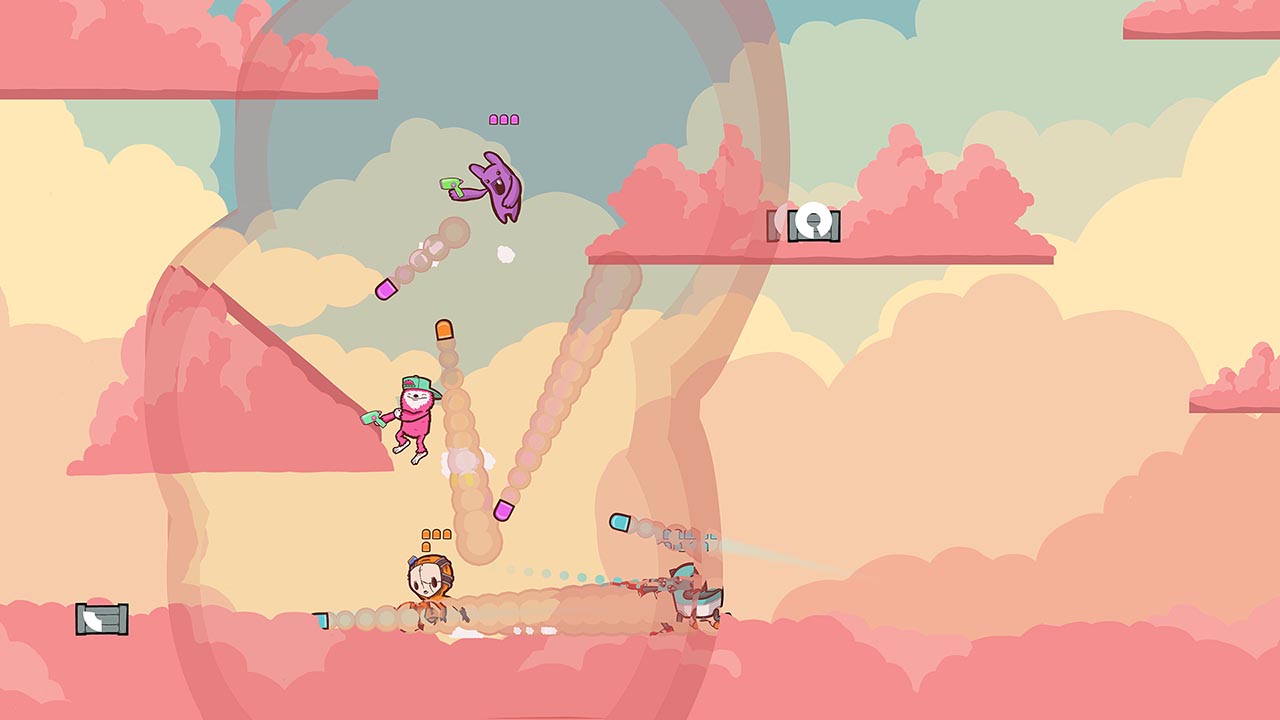
Playable characters duke it out in Cloud City.
Slow Down with Time Bubbles
Retimed is a competitive, local multiplayer arena shooter with bright colors, a quirky cast and world, and a time-defying twist in gameplay. According to the game developer’s website, its origins go all the way back to a university setting, where students Annika Rüegsegger and Max Striebel were literally inspired by The Matrix. They wanted to translate that film’s iconic slow-mo scenes into a gameplay experience. After coming up with a working prototype of the concept, the two founded the Switzerland-based studio Team Maniax and turned that prototype into a full game. The end result is today’s Retimed, featuring Team Maniax’s answer to translating the slow-mo of The Matrix into a video game: time bubbles.
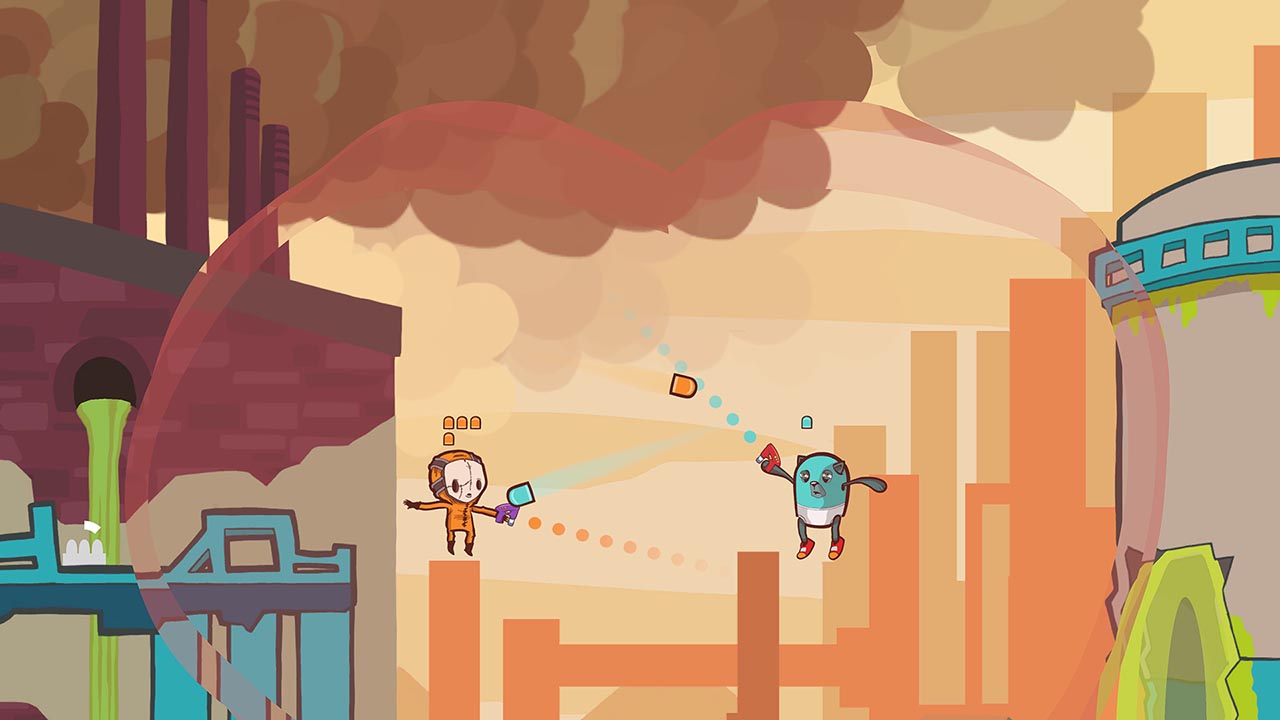
The Industrial District is filled with working portals that serve as teleportation shortcuts.
In any of the game’s various arenas, time bubbles pop into existence when a bullet races toward a playable character. Like their name suggests, time bubbles manipulate time—specifically, they slow down time, giving the player a chance to dodge and even counterattack. Serving as the game’s core mechanic and defining twist, it really succeeds at capturing the general perspective of The Matrix protagonist Neo as he evades bullets in the film. You simply feel awesome when pulling off a tricky dodge in slow-mo like he does. I was thrilled and surprised when I managed to jump, then duck, then jump again in rapid succession to avoid a barrage from one of my brothers, something that impressed him too.
Even with the slow-mo mechanic, action can still get very hectic and fast, but these bursts of swift chaos felt more fun than irritating to me.
Using the Technicolor Terrain
Multiple arenas in the game behave differently, and they essentially help keep the time bubble mechanic fresh and entertaining. There’s an arena entirely made of clouds, something all bullets can pierce through. Finding cover became impossible here—but it also became a place where no barrier could block your bullets.
There are the Ice Cream Mines where you can shoot down icicles to take down your opponents; the Rubber Forest where you can make your bullets bounce at odd angles to hit your target; the Industrial District with portals you and your bullets can teleport through, disrupting the laws of time and space even more.
These levels with their variety of environmental effects really helped change up the gameplay so that things stayed interesting and the experience didn’t become tiresome. I enjoyed adjusting how I played depending on which arena became a battlefield, and I liked the variety in level design.
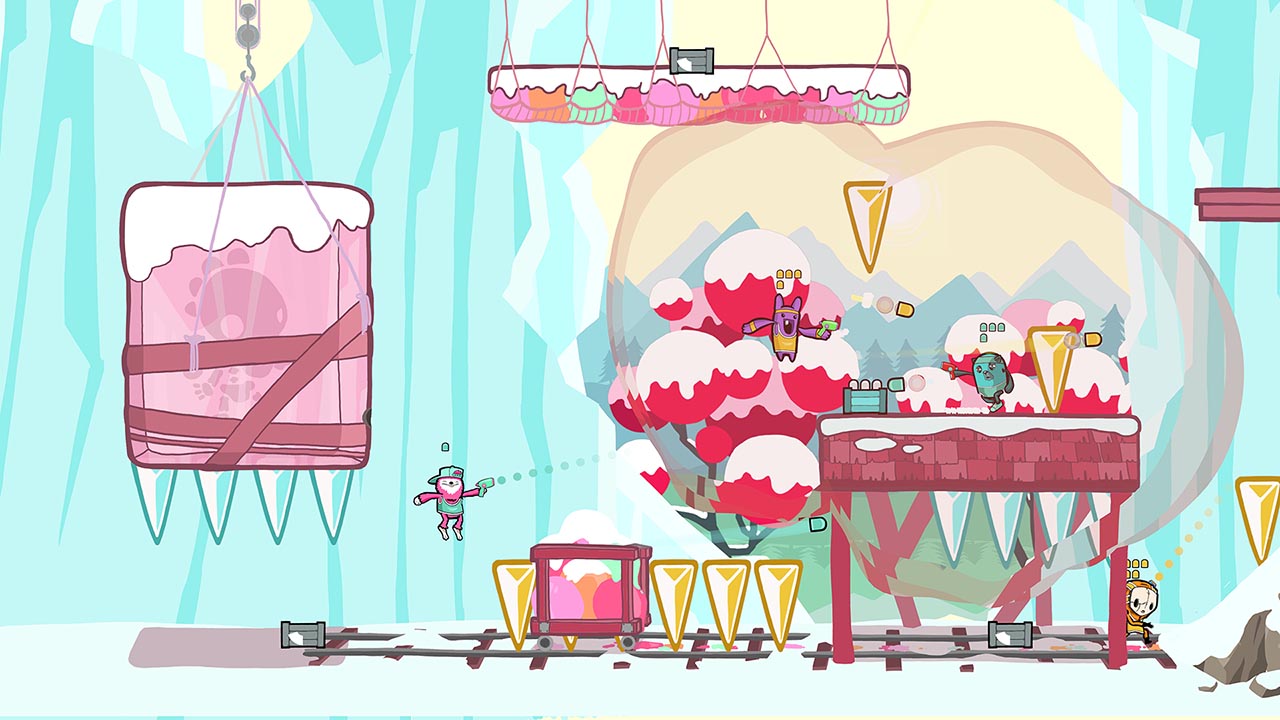
When a player shoots down icicles in the Ice Cream Mines, the icicles become the color of that player, and it will only harm the other players. You cannot accidentally hurt yourself with an icicle you shoot down.
Learning on the Battlefield
The unique time bubble mechanic that slows the action down—combined with colorful lines marking where your weapon is aimed—really make the game accessible, even to people who haven’t played a lot of shooters, such as myself. I never felt frustrated with playing, because I actually scored some wins, or came close to victory, and it all felt very fair while remaining fun.
Despite the lack of a clear tutorial and a too small controls diagram, Retimed isn’t too difficult to pick up, and I learned mostly through experimenting while I played. My brothers and I got enough of a grip on gameplay to make for an absorbing round of firefights, and we learned even more as we went along.
It was actually more fun stumbling upon the realization that I could shoot down other players’ bullets, entertaining me more than if that had been explained in a tutorial.
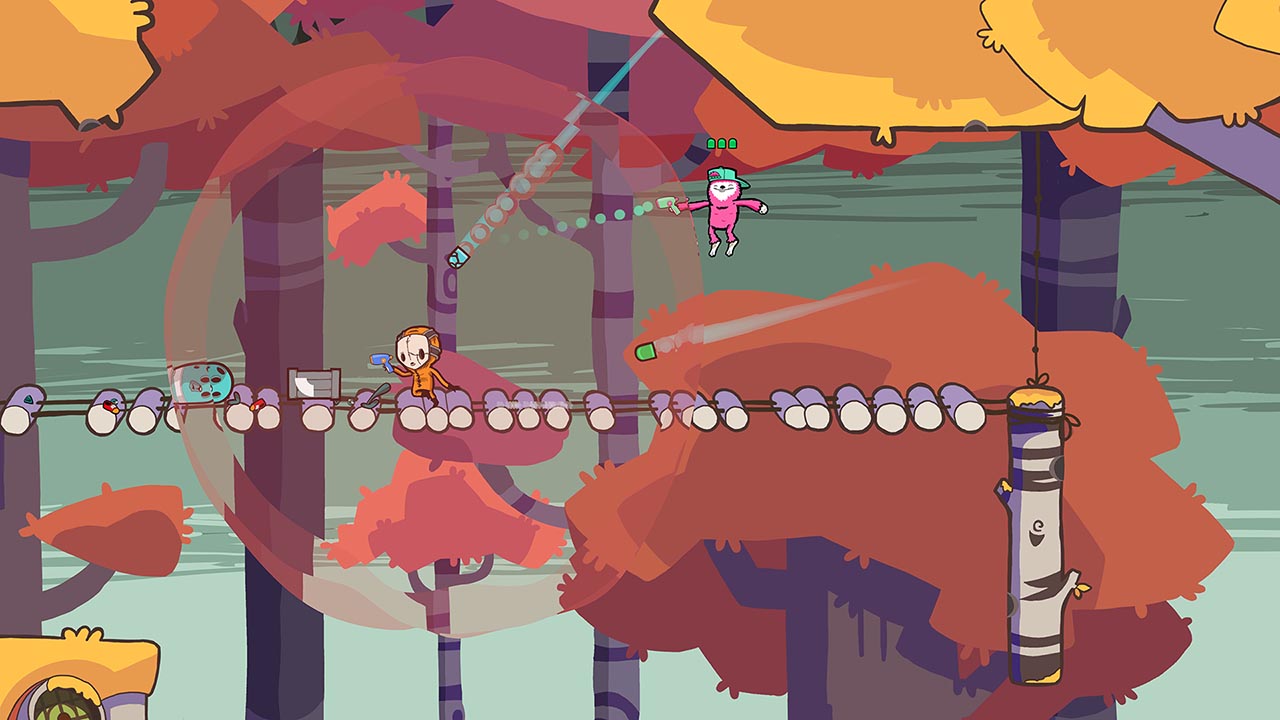
Bullets can be bounced off elastic trees in the Rubber Forest.
Getting blasted is pretty enjoyable too, and this is because of how it’s executed. The playable characters resemble colorful plush or vinyl toys, and when a bullet hits them, they are ripped to shreds like a toy splitting apart at the seams.
After getting blown to pieces, characters get put back together not long after, and with ammo replenished—but their pieces are telekinetically and randomly pulled to an area different from where they were shot down, and they regenerate there instead.
This ends up leading to a nice element of randomization that offers a chance to quickly improvise strategy, or get amused by an instance of bad luck (or good luck depending on your perspective).
For example, one time my character regenerated on a higher platform above, and from there I could shoot down at the competition. Another time, my character regenerated in the middle of a firefight between my brothers, and I was promptly blown up again, something that amused all of us.

Pros
- The slow-mo core mechanic is unique and fun, it helps make the shooter gameplay more accessible to a wider audience, and it successfully captures the feel of slow-mo dodging from The Matrix.
- Fun design of world and characters.
- Levels with different environmental effects provide for even more variety in gameplay.
- It all comes together for a wild party game experience.
Cons
- Not the most clear in how to start playing, due largely to a small controls diagram.
- While the design of the lobby is creative, it’s also somewhat clunky in terms of functionality, i.e. it’s a little annoying to go back to another section of the lobby if you need to make a last minute option or character change.
- No game breaking bugs, but still a little buggy—specifically, it seems like at the conclusion of fights, characters will be sent sliding to the edges of the screen, either up or down, or side to side (admittedly, this was funny to watch).

The playable characters are cute and weird, though some are either purely charming or a little unsettling. From left to right: Bintain (blue), Yowie (pink), Violet (purple), and Psycho (orange).
Conclusion
With its slow-mo time bubbles, Retimed is not only a fun party game accessible to a wide audience, but it succeeds at making you feel like Neo avoiding bullets in The Matrix. Rather than trying to emulate that hit film any further, the game becomes even more distinct with its quirky and colorful toy-like characters, half of whom have an Adventure Time vibe, while the rest are darkly comedic and more reminiscent of Cartoon Network’s mature programming under Adult Swim. Arenas with varying environmental effects that encourage different strategies, along with other smaller mechanics, help keep gameplay fresh and vibrant.
(Note: Nintendo Switch review copy provided by developer Team Maniax.)
